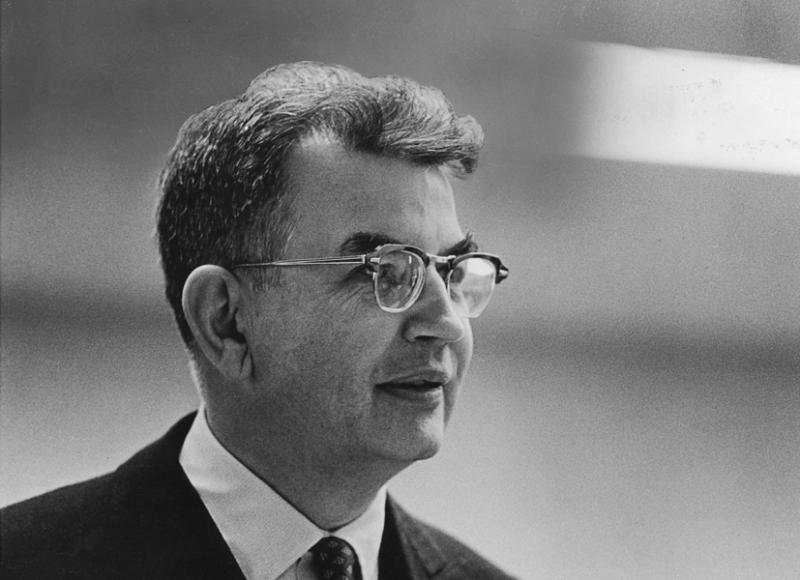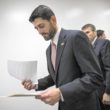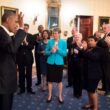(Ronald Coase)
Property isn’t a vertical relationship between a person and an object, but instead is a horizontal, reciprocal relationship of exclusions between people. Since the benefit of one person in regard to property comes at the expense of someone else, there’s no logical or coherent way to invoke liberty or classical liberal principles of “do no harm” when it comes to how the law determines the shape of property. All we can do is pick among competing systems that try to achieve shared social goals.
That’s not an idea normally associated with the economist Ronald Coase, who died yesterday at 102. But it’s a very important part of his landmark paper, ”The Problem of Social Cost” (1960), that goes missing when the right-wing celebrates his legacy. Let’s unpack it.
The paper is meant to address the issue of externalities, or when a third party pays a price (or get a benefit) as a result of market transactions he or she isn’t engaged with. Pollution is the classic example.
The normal Coase Theorem argues that in the ethereal world of perfect markets, clear property rights, and no transaction costs, legal regulations would only impact the distribution but not the outcomes of externalities.
Obligatory example, this one from Coase: someone purchases land next to a train to farm. The train throws off sparks, which damage the crops. The railroad company could remodel the train to stop the sparks. What difference would liability law and regulations make?
Let’s say it cost $100 to put on spark guards that would stop $120 worth of crop damage. In this case,he spark guards would get installed. If liability fell on the train company, they’d pay the $100. If it didn’t, the farmer would pay the train company $100 to install the spark guards. If those numbers were reversed, the spark guard wouldn’t get installed. The train company would just pay $100 for the crop damages to prevent the lawsuit if they faced liability. If they didn’t, the farmer would eat the $100 loss. In both cases, the law didn’t change what decision would be made if they just bargained together. The only thing that would change would be the cash payments. (This does not pan out well in the real world.)
| Thanks to the late economist Ronald Coase, we know that there’s no logical or coherent way to invoke liberty or classical liberal principles of “do no harm” when it comes to how the law determines the shape of property. |
What does this have to do with libertarianism? As Barbara Fried notes, Coase is defining the social costs as being “the joint costs of conflicting desires in a world of scarce resources.” This move brings the progressive legal realism of the early 20th century law into the economics field.
What Coase is overturning is the idea that the scenario above is simply the railroad damaging the crops, and thus the issue is how to stop or punish the railroad company. Instead, there are multiple, valid claims, claims that necessarily put restrictions on others, and the issue is how to balance them.
As Coase says early on about externalities, “The question is commonly thought of as one in which A inflicts harm on B and what has to be decided is: how should we restrain A? But this is wrong. We are dealing with a problem of a reciprocal nature. To avoid the harm to B would inflict harm on A. The real question that has to be decided is: should A be allowed to harm B or should B be allowed to harm A?”
Indeed, the very first thing Coase does in the paper is to argue the “reciprocal” nature of social cost. The cost of the crop damage isn’t a question. The problem comes out of two people’s desire to utilize their property rights: for the train to run as is, and for the farmer to grow crops near the tracks. The question is, whose property rights do we privilege: the railroad’s or the farmer’s? People in law and economics usually dodge this by arguing that bargaining will take care of the (non-distributional) issues, but in the regular world, which is full of transaction costs, these decisions will need to be made.
And this is where Coase is a major problem for current libertarian thinking. Today’s libertarians draw almost their entire philosophy from the idea of “self-ownership” and think that the only role of government is to enforce a minimal, classical liberal version of “do no harm.”
But notice how ideas like non-aggression makes no sense in the Coase world. The ideal of self-ownership and minimal government can’t get us out of this problem, because it is precisely what ownership entails that is under question. And to realize one person’s ownership would necessarily entail limiting the ownership claims of someone else. (You can read the hostility that anarcho-capitalist Murray Rothbard had for the Coase Theorem’s “social engineering” here.)
Or as Coase concludes, “We may speak of a person owning land and using it as a factor of production but what the land-owner in fact possesses is the right to carry out a circumscribed list of actions…in choosing between social arrangements within the context of which individual decisions are made, we have to bear in mind that a change in the existing system which will lead to an improvement in some decisions may well lead to a worsening of others.”
The question of which social arrangements are best is the problem we face.
Some, however, can’t even see the question.
Mike Konczal is a fellow with the Roosevelt Institute, where he works on financial reform, unemployment, inequality, and a progressive vision of the economy.
This article originally appeared in The Next New Deal.





0 Comments